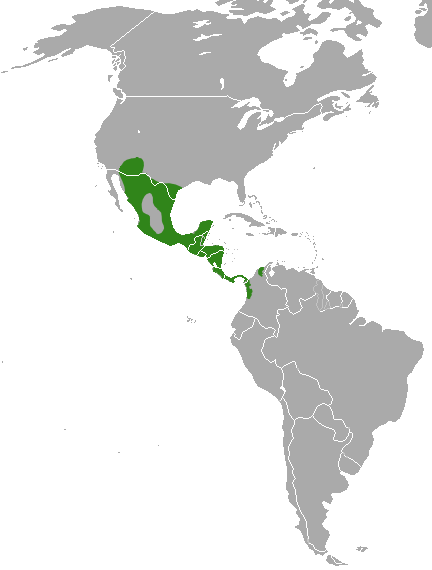
Habitat and range
A white-nosed coati at Rincón de la Vieja Volcano National Park in Costa Rica
A white-nosed coati hanging out at the Philadelphia Zoo
Coatis from Cozumel Island have been treated as a separate species, the Cozumel Island coati, but the vast majority of recent authorities treat it as a subspecies, N. narica nelsoni, of the white-nosed coati.[2][1][9][13] They are smaller than white-nosed coatis from the adjacent mainland (N. n. yucatanica), but when compared more widely to white-nosed coatis the difference in size is not as clear.[10] The level of other differences also support its status as a subspecies rather than separate species.[10]
White-nosed coatis have also been found in the U.S. state of Florida, where they are an introduced species. It is unknown precisely when introduction occurred; an early specimen in the Florida Museum of Natural History, labeled an "escaped captive", dates to 1928. There are several later documented cases of coatis escaping captivity, and since the 1970s there have been a number of sightings, and several live and dead specimens of various ages have been found. These reports have occurred over a wide area of southern Florida, and there is probable evidence of breeding, indicating that the population is well established.[14]
Feeding habits
They are omnivores, preferring small vertebrates, fruits, carrion, insects, snakes and eggs. They can climb trees easily, where the tail is used for balance, but they are most often on the ground foraging. Their predators include boas, raptors, hunting cats, and Tayras (Eira barbara). They readily adapt to human presence; like raccoons, they will raid campsites and trash receptacles. They can be tamed easily, and have been verified experimentally to be quite intelligent.[citation needed]Behavior
A white-nosed coati in a conservation area in Arenal, Costa Rica
Viverra narica (Linnaeus, 1766
- N. n. narica (Linnaeus, 1766)
- N. n. molaris Merriam, 1902
- N. n. nelsoni Merriam, 1901
- N. n. yucatanica J. A. Allen, 1904[2]

The native range of the white-nosed coati. Note: Its Colombian range is restricted



No comments:
Post a Comment
Note: Only a member of this blog may post a comment.